If you’re interested in Japanese yokai (supernatural beings), you may have heard of the eerie “Oboroguruma”—a ghostly ox cart with a mind of its own. This unique yokai, rooted in Heian-period folklore, is associated with the silent yet terrifying presence of an ox cart that moves mysteriously through the night. But what’s behind this haunting legend, and why did such stories emerge?
Interestingly, this eerie cart also appears in the popular action game Nioh 2, where it has been brought to life to engage and challenge players. In this article, we’ll explore the origins, characteristics, and mystery of the Oboroguruma, as well as its appearance in Nioh 2 and the significance it holds in Japanese culture.
What is the Oboroguruma?
The Oboroguruma is a type of yokai, or supernatural being, originating in Heian-period Japan. It is known as a haunted ox cart, shrouded in ghostly mist. Moving silently or emitting ominous sounds, the Oboroguruma instills fear in all who encounter it. But how did such a tale come about?
Overview of the Oboroguruma Legend
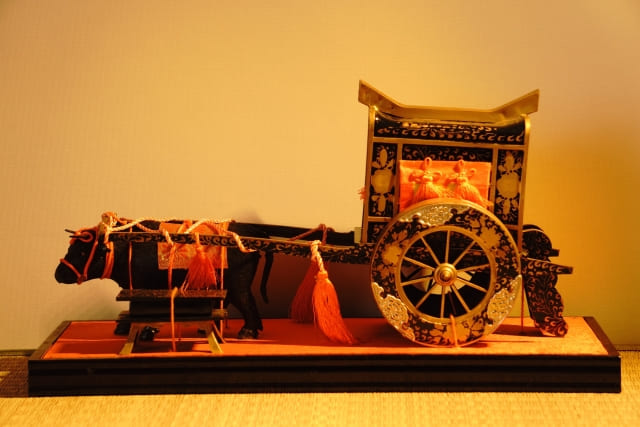
The legend of the Oboroguruma appears in classic Japanese literature and stories, primarily from the Heian era. According to folklore, the Oboroguruma was once an ordinary ox cart, but intense curses or grudges transformed it into this supernatural phenomenon. Many Oboroguruma tales depict vengeful spirits or sorrowful individuals whose unresolved emotions fused with the ox cart, giving it life and purpose.
In the complex world of Heian Japan, where courtly intrigue, betrayal, and unspoken rivalries ran high, stories of vengeful spirits and yokai captured the imagination of people and served as chilling reminders of societal consequences.
The Appearance and Characteristics of Oboroguruma
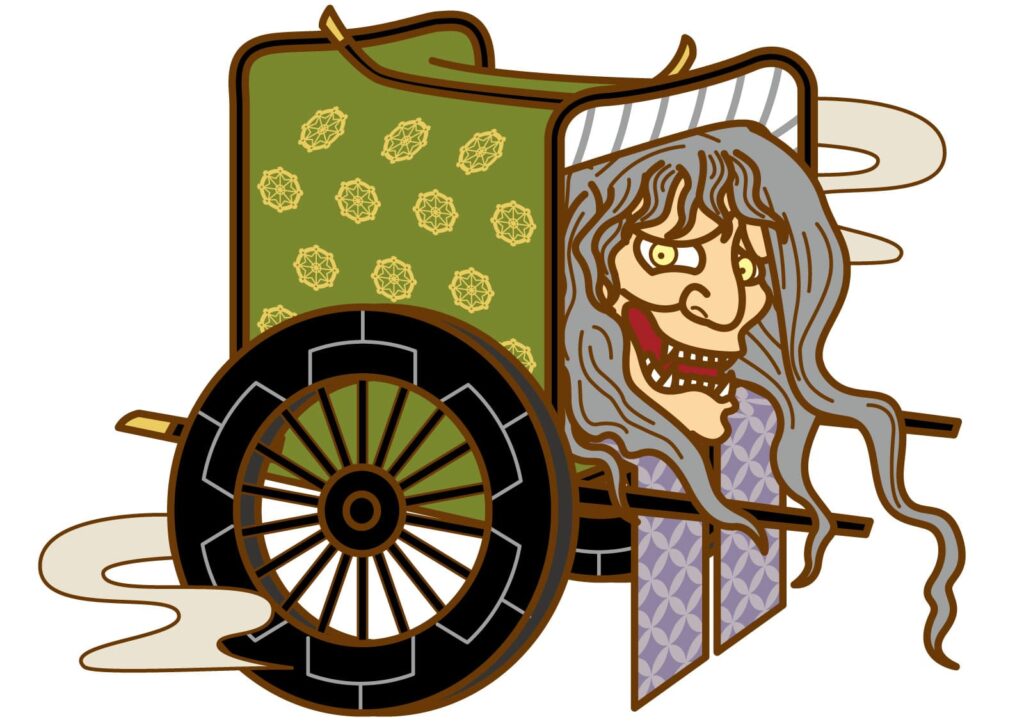
The Oboroguruma is typically depicted as an ox cart surrounded by mist or smoke, often decayed or in disrepair, moving under its own power. The combination of mist and shadows that envelop the cart, coupled with its soundless movement, creates a mysterious and terrifying sight for those who cross its path. Its presence is said to evoke bad omens, as if foretelling impending misfortune to those who dare approach.
The Oboroguruma also has a habit of “feeding” on human misery, absorbing the sadness or anger of those it encounters. In response, Heian-era people would often avoid nighttime roads, fearing an encounter with this sinister being.
The Origins and Reasons Behind the Oboroguruma’s Transformation
One well-known legend surrounding the Oboroguruma tells of a noblewoman who, heartbroken after losing her love to another, cast her hatred and resentment onto the ox cart, which then became haunted with her spirit. This tale reflects the tension and complexities of life in Heian Japan, where repressed emotions could lead to supernatural consequences. Oboroguruma can thus be seen as a symbol of accumulated sorrow, social isolation, and unfulfilled desires that transformed ordinary objects into haunted symbols of tragedy.
The Oboroguruma in Nioh 2
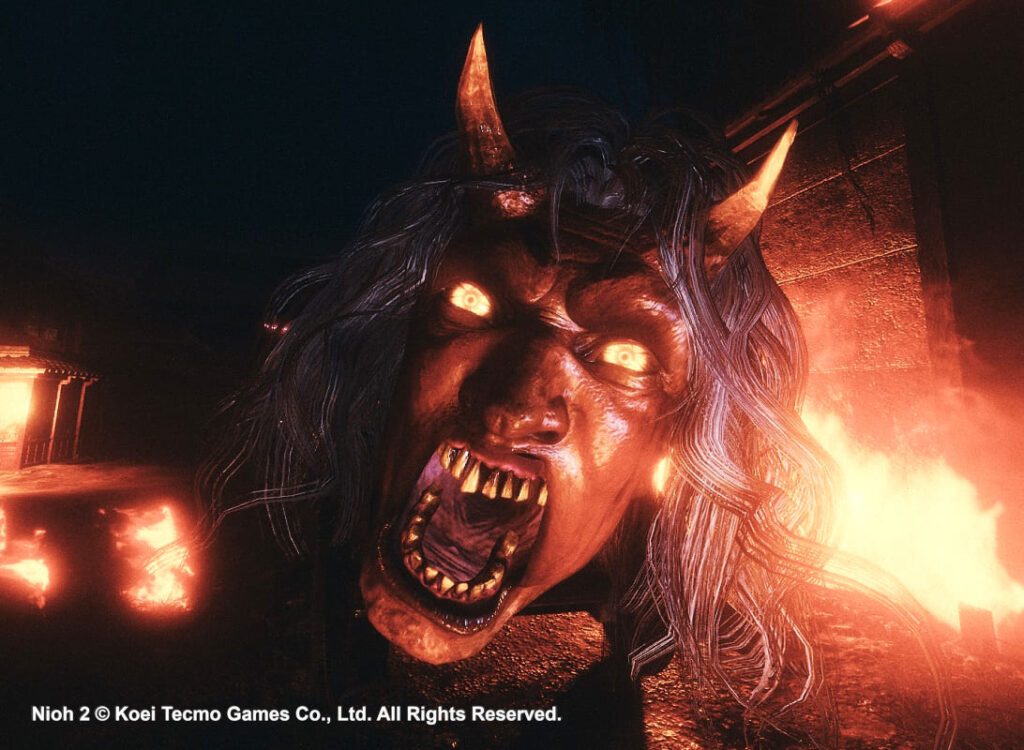
In Nioh 2, the Oboroguruma makes a memorable appearance as a dangerous enemy. True to its legend, this haunted cart silently moves around the battlefield, confronting players with sudden, unexpected attacks. Although not a boss character, the Oboroguruma can still be challenging due to its unique attacks and eerie presence.
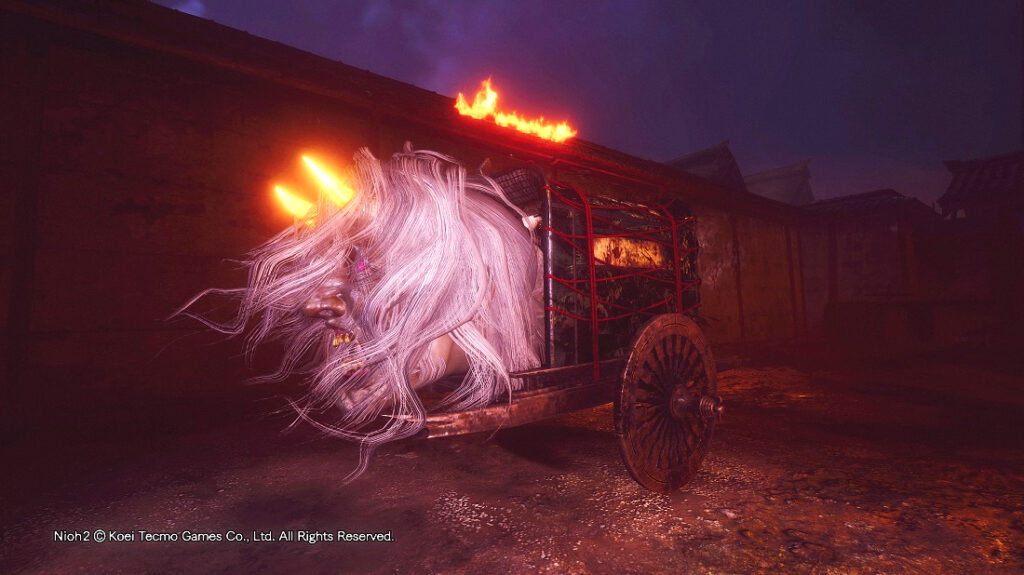
Oboroguruma’s Role and Setting in the Game
In Nioh 2, the Oboroguruma takes on the role of a mid-level yokai enemy. Its unsettling appearance and unpredictable movement create an atmospheric experience, adding tension to the game’s exploration of Japanese folklore. It is encountered primarily in dimly lit, misty areas, staying true to its spectral origins. Nioh 2’s portrayal of the Oboroguruma respects traditional folklore while integrating it into the game’s high-stakes, fast-paced world, making the experience both thrilling and authentically spooky.
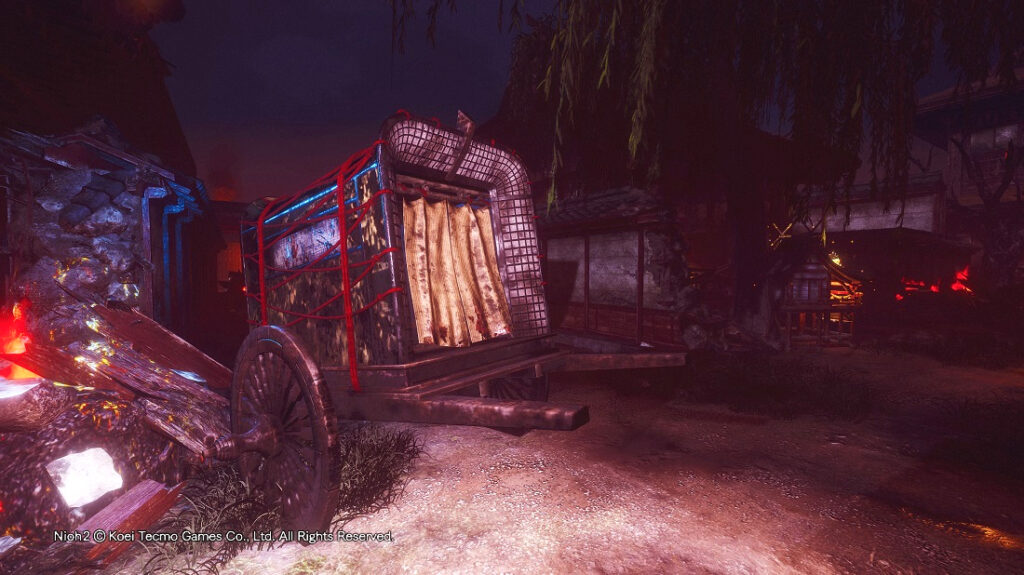
Tips for Encountering the Oboroguruma in Nioh 2
When facing the Oboroguruma in Nioh 2, players need to stay vigilant and observe its movements carefully. The Oboroguruma attacks by charging toward the player, often catching them off-guard if they’re not cautious. Players should aim to dodge its charges and seek opportunities to counterattack during its cooldown moments. Paying attention to its visual and audio cues, and recognizing the signs of its impending attacks, will help players survive and conquer this challenging enemy.
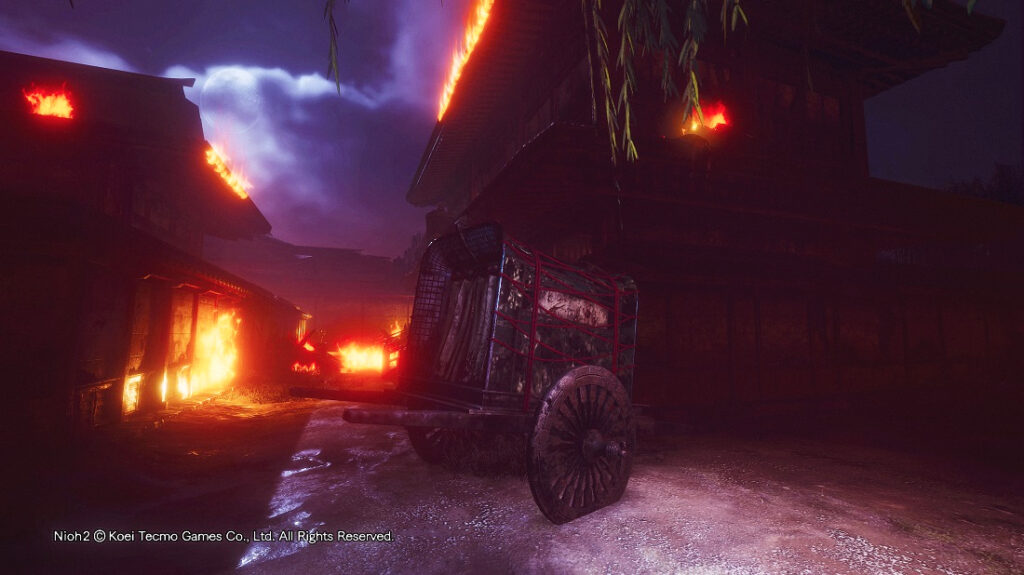
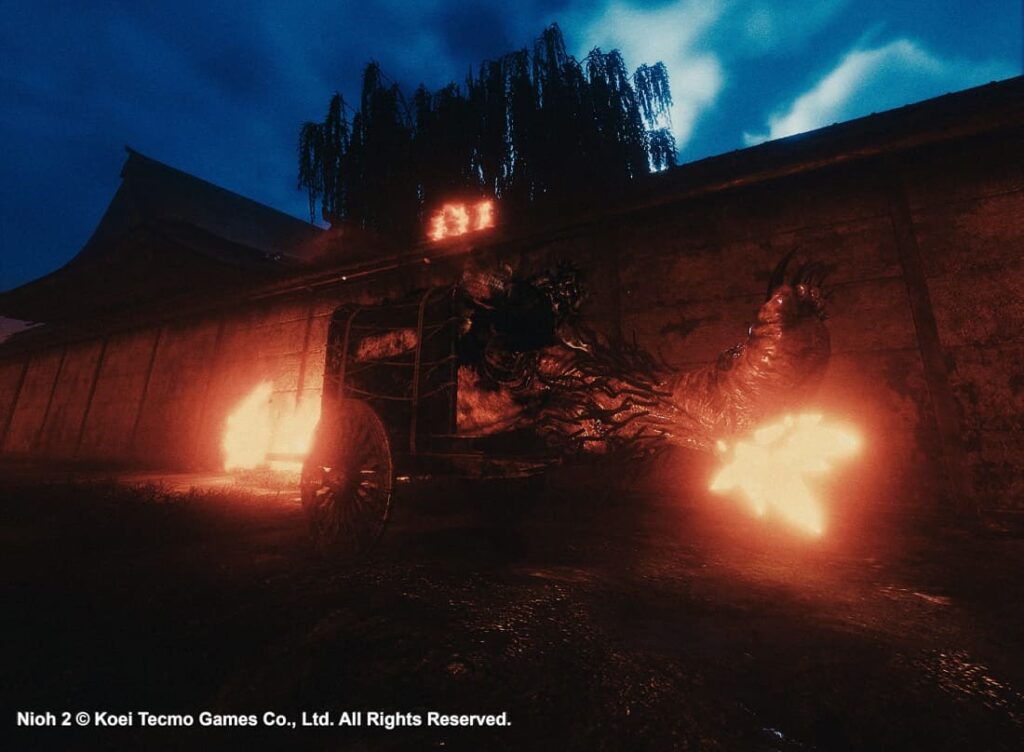
Oboroguruma Q&A
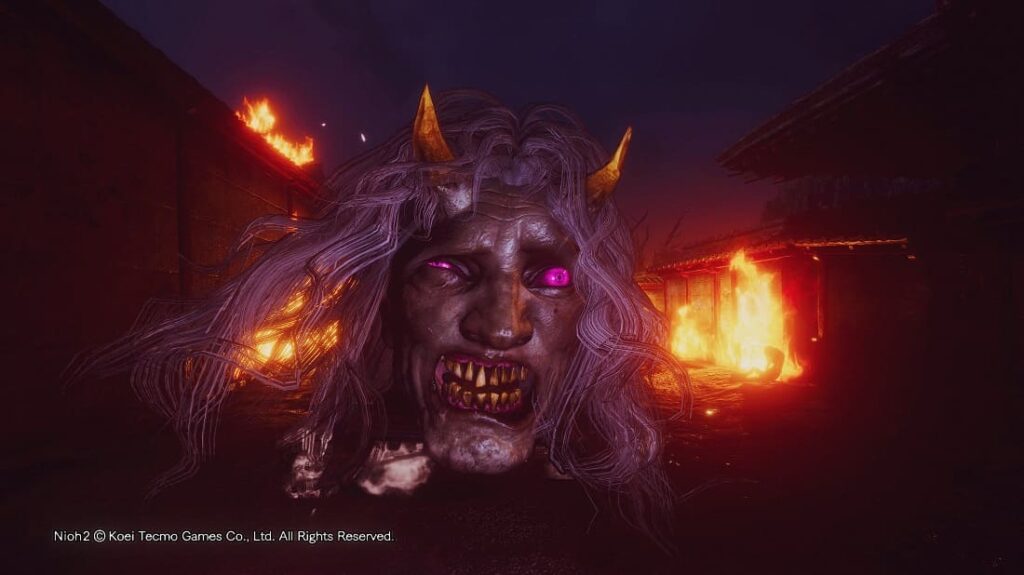
- QDoes the Oboroguruma appear in other games or media?
- A
Yes, the Oboroguruma appears in other forms of Japanese media, including horror games, films, and anime. As a classic Japanese yokai, it’s often used to add an element of supernatural intrigue to various narratives.
- QAre there similar yokai to the Oboroguruma?
- A
Another similar yokai is the Wanyudo, a fiery wheel yokai. While the Wanyudo takes the form of a burning wheel that rolls through the streets, the Oboroguruma maintains its ox cart appearance and is associated with mist or smoke rather than flames. Both are symbolic of vengeance and ill will, but the Wanyudo is known for causing physical harm to people, whereas the Oboroguruma is more of an ominous and haunting presence.
Conclusion
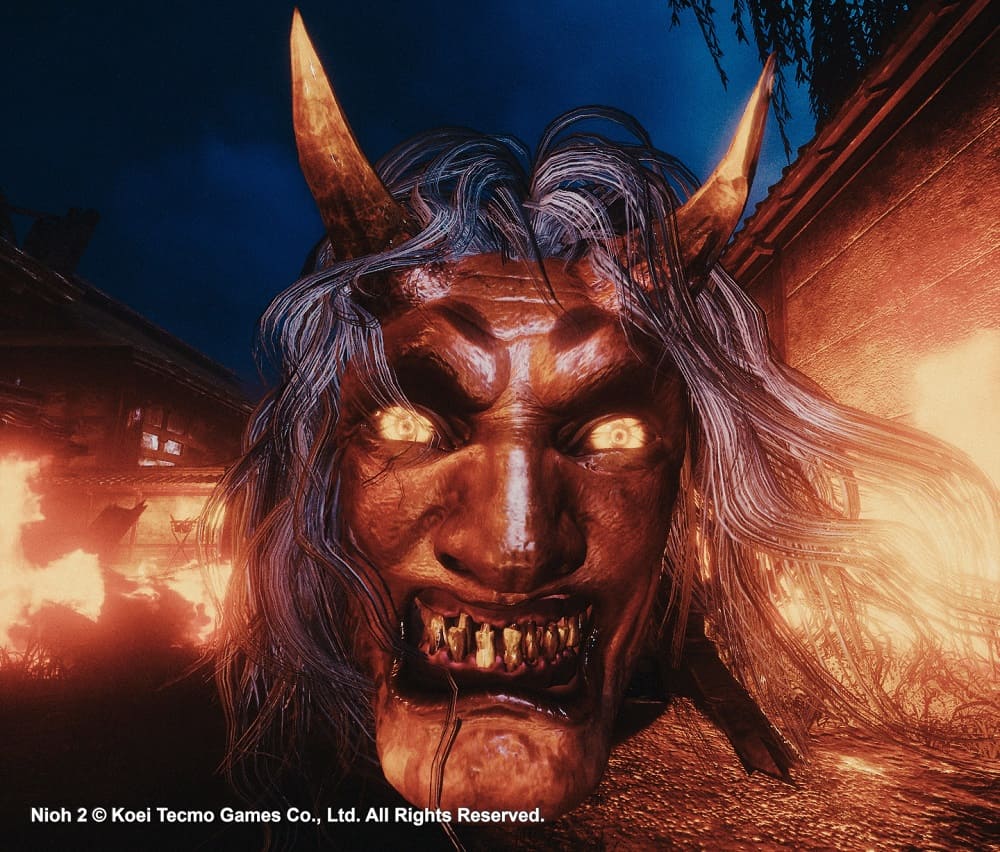
The Oboroguruma stands out as one of Japan’s more mysterious and eerie yokai, tied deeply to the culture and social conditions of the Heian period. Its story reflects the fear and respect for spiritual power, which was particularly present in a society marked by rigid social structures and hidden emotions.
In modern media like Nioh 2, the Oboroguruma has been reimagined to engage a global audience with its timelessly spooky presence. For anyone intrigued by the supernatural, this yokai offers a fascinating look into the fearsome folklore of Japan’s past. So, if you’re curious about Japanese yokai, don’t miss the chance to experience the Oboroguruma—whether in a story or a game, it will undoubtedly leave a lasting impression.

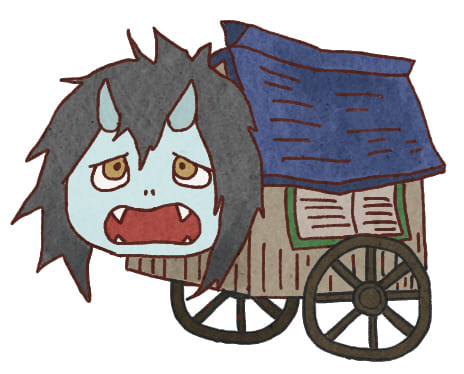
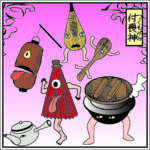

Comments